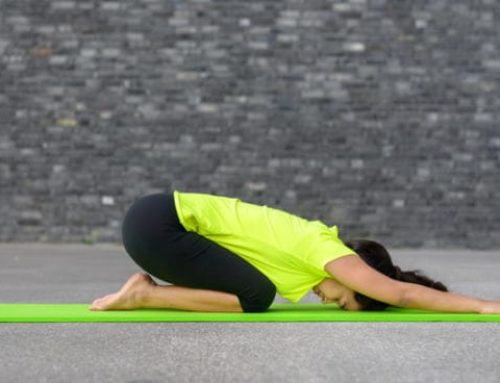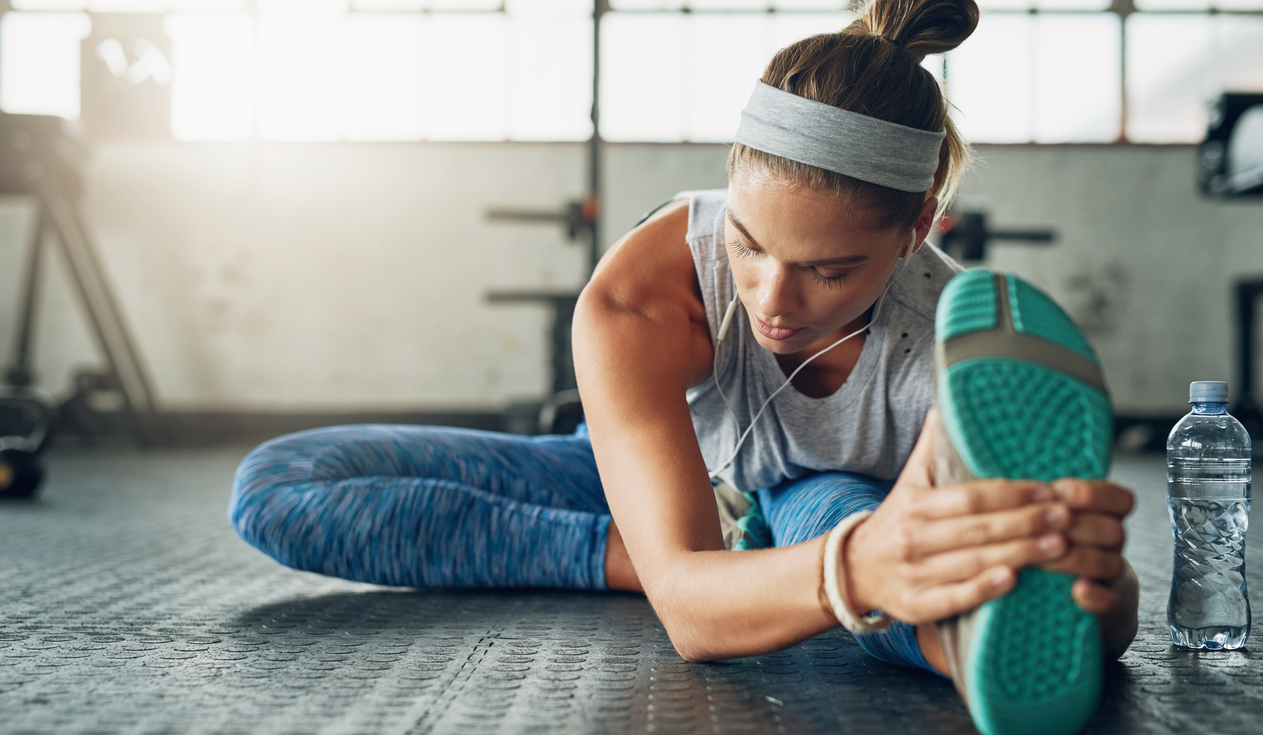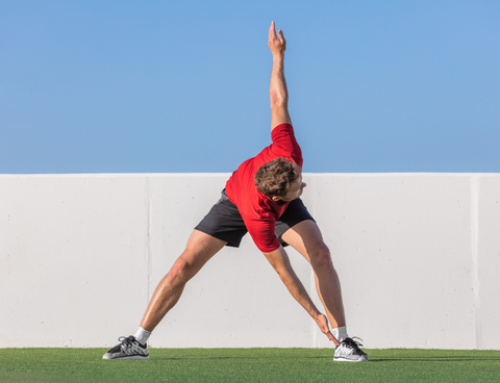Dynamic Warm-Up Exercises Done the Right Way
For at least the past decade, the general consensus has been that a dynamic warm-up is necessary before any type of physical activity. Although static stretching still has its place—especially when restoring chronically shortened muscles to their resting length after a tough workout or period of inactivity—it’s simply not effective when it comes to increasing things like body temperature, blood flow and central nervous system activation.
Even so, many athletes still don’t give their warm-up the appropriate attention. Sometimes it’s because their coaches don’t make it a priority, arguing they don’t have time to squeeze in a full warm-up.
Going through the motions is not enough. You need to have a progressive system in place and use proper form, or risk injury. In 2012, Swedish researchers had 1,400 female soccer players ages 14 to 18 perform an active, neuromuscular warm-up for 15 minutes, just twice per week. At the end of the season, they reported a whopping 64 percent reduction in the incidence of ACL injuries.
RELATED: ACL Injury Prevention Tips for Female Athletes
A more widely recognized dynamic warm-up up protocol, known as the PEP (Prevent injury and Enhance Performance) boasts similar results.
Is setting aside 12 to 15 minutes at the beginning of a practice session not worth reducing by two-thirds the incidence of one of the most devastating athletic injuries? An ACL injury virtually guarantees a lost season and severely reduces the likelihood of an athlete ever returning to his or her pre-injury state.
Once you make time for the warm-up, you also have to do the exercises correctly, or you’ll increase your risk of injury. For example, when practicing landing from jumps, allowing your knees and the arches of your feet to cave inward, or your lower back to round, can increase stress on your hips, knees and ankles more than five times your body weight due to the effects of gravity.
Consider how the following dynamic warm-up exercises, executed improperly, can turn an otherwise great stretch or muscle activation drill into an accident waiting to happen.
RELATED: Dynamic Warm-Up Exercises for a Safe, Effective Workout
Warm-up Exercise Miscues
Jumping Jack variations
How do you mess up a jumping jack? They have been part of the physical culture for what seems like forever. Even this seemingly simple drill, however, can expose joints to unwanted stress when performed improperly. It is not uncommon for young athletes to perform them with their feet positioned too far apart, causing their knees to cave inward on every landing.
Solution: Land with your feet a little closer together and your toes turned out slightly.
Supine Bridge
A great way to fire up the glutes, Hip Bridges can put the lower back at risk when performed incorrectly. Athletes who lack the proper strength or body awareness to do these typically distend their abdominals and excessively arch their lower back in attempts to get more height.
Solution: Keep your core lightly braced, with your navel pulled toward your spine as you lift your hips off the ground.
Walking Lunges with Rotation
This is perhaps the best example of a good drill that can quickly go bad. Rotational Lunges are a great way to stretch tight hip flexors and improve rotation of the thoracic spine. Too often though, athletes go flying through this drill, allowing their knees to either bow or cave in relation to their hip and foot position. Or, they attempt to make up for a lack of hip mobility by hyperextending their lower back.
Solution: Keep your front knee stationary as you execute a controlled rotation with your core slightly braced. Also, place emphasis on loading the heel of your front foot (to avoid too much shearing stress on your knee) and keeping a “tall” torso as you descend into the Lunge and rotate.
RELATED: 12 Dynamic Stretches Football Players Must Do
Frankensteins
The big problem here is that instead of trying to open up tight hamstrings, most young athletes treat this as a competition to see how high they can kick their lead leg in the air. Doing this not only increases the chances of pulling what are already notoriously tight muscles, but it also completely nullifies the purpose of the stretch.
The support leg needs to remain unaffected while the other leg kicks forward. Allowing the hips to tuck under the torso and the back knee to bend does not effectively stretch the hamstrings and can expose the lower back to injury.
Solution: Maintain a tall torso and press your support leg into the ground as you kick your lead leg toward your outstretched fingers in a controlled manner.
Lateral Shift
Whether performed in a stationary position or in motion, this often proves to be a challenging stretch for athletes with tightness in their groin area and hamstrings. Proper execution involves squatting toward one leg as the opposite leg remains straight (this is the side being stretched). The hips need to push back, and the knees need to remain pointed forward. All too often though, athletes with tight hamstrings round their lower back. Those with tightness in the groin allow their knees to bow toward the side they’re squatting to.
Solution: Keep the drill stationary at first, concentrating on pushing your hips back and only squatting to the point where you can maintain the proper hip and knee position. Once mobility improves, you can perform the more difficult traveling version of the drill, making sure to emphasize the same points.
Hip Cradle
In addition to experiencing difficulty getting much mobility out of their lead hip, athletes often place unnecessary stress on the outside of their ankle when performing this drill. Instead of getting their lower leg to pull up toward their waist, they often throw their shoulders back in an effort to produce some movement here. As previously mentioned, this kind of hyperextension of the lower back is best avoided. So is any type of stress to the outside of the ankle joint.
Solution: In addition to focusing on a tall torso, with your shoulders held directly above your hips as you attempt to bring the lower leg up toward your waist, grab the outside of your knee and ankle with your hands positioned down, facing the floor. Grabbing the bottom of your foot with your palm positioned up only invites you to apply too much lateral stress on the ankle joint.
RELATED: Simple Dynamic Warm-Up Hip Stretches for Big Gains
Stick Jump
Designed to teach proper landing mechanics (when done on either one or two legs), this drill is frequently butchered. The potential pitfalls associated with this drill are many, as I detailed above..
Solution. Make sure you have the strength to execute a proper Bodyweight Squat (and a One-Legged Squat, if you include this variation in your warm-up) before attempting these. Adopt a good takeoff position—with your hips, knees and ankles slightly flexed and your arms positioned to swing through. Jump in a controlled manner and attempt to land quietly, or “like a ninja,” with the same degree of bend in your hips, knees and ankles that you had at takeoff.
Reference
Waldén M, Atroshi I, Magnusson H, Wagner P, Hägglund M. “Prevention of acute knee injuries in adolescent female football players: cluster randomised controlled trial.” BMJ 2012;344:e3042. doi: 10.1136.bmj.e3042 (published May 3, 2012).
[cf]skyword_tracking_tag[/cf]RECOMMENDED FOR YOU
MOST POPULAR
Dynamic Warm-Up Exercises Done the Right Way
For at least the past decade, the general consensus has been that a dynamic warm-up is necessary before any type of physical activity. Although static stretching still has its place—especially when restoring chronically shortened muscles to their resting length after a tough workout or period of inactivity—it’s simply not effective when it comes to increasing things like body temperature, blood flow and central nervous system activation.
Even so, many athletes still don’t give their warm-up the appropriate attention. Sometimes it’s because their coaches don’t make it a priority, arguing they don’t have time to squeeze in a full warm-up.
Going through the motions is not enough. You need to have a progressive system in place and use proper form, or risk injury. In 2012, Swedish researchers had 1,400 female soccer players ages 14 to 18 perform an active, neuromuscular warm-up for 15 minutes, just twice per week. At the end of the season, they reported a whopping 64 percent reduction in the incidence of ACL injuries.
RELATED: ACL Injury Prevention Tips for Female Athletes
A more widely recognized dynamic warm-up up protocol, known as the PEP (Prevent injury and Enhance Performance) boasts similar results.
Is setting aside 12 to 15 minutes at the beginning of a practice session not worth reducing by two-thirds the incidence of one of the most devastating athletic injuries? An ACL injury virtually guarantees a lost season and severely reduces the likelihood of an athlete ever returning to his or her pre-injury state.
Once you make time for the warm-up, you also have to do the exercises correctly, or you’ll increase your risk of injury. For example, when practicing landing from jumps, allowing your knees and the arches of your feet to cave inward, or your lower back to round, can increase stress on your hips, knees and ankles more than five times your body weight due to the effects of gravity.
Consider how the following dynamic warm-up exercises, executed improperly, can turn an otherwise great stretch or muscle activation drill into an accident waiting to happen.
RELATED: Dynamic Warm-Up Exercises for a Safe, Effective Workout
Warm-up Exercise Miscues
Jumping Jack variations
How do you mess up a jumping jack? They have been part of the physical culture for what seems like forever. Even this seemingly simple drill, however, can expose joints to unwanted stress when performed improperly. It is not uncommon for young athletes to perform them with their feet positioned too far apart, causing their knees to cave inward on every landing.
Solution: Land with your feet a little closer together and your toes turned out slightly.
Supine Bridge
A great way to fire up the glutes, Hip Bridges can put the lower back at risk when performed incorrectly. Athletes who lack the proper strength or body awareness to do these typically distend their abdominals and excessively arch their lower back in attempts to get more height.
Solution: Keep your core lightly braced, with your navel pulled toward your spine as you lift your hips off the ground.
Walking Lunges with Rotation
This is perhaps the best example of a good drill that can quickly go bad. Rotational Lunges are a great way to stretch tight hip flexors and improve rotation of the thoracic spine. Too often though, athletes go flying through this drill, allowing their knees to either bow or cave in relation to their hip and foot position. Or, they attempt to make up for a lack of hip mobility by hyperextending their lower back.
Solution: Keep your front knee stationary as you execute a controlled rotation with your core slightly braced. Also, place emphasis on loading the heel of your front foot (to avoid too much shearing stress on your knee) and keeping a “tall” torso as you descend into the Lunge and rotate.
RELATED: 12 Dynamic Stretches Football Players Must Do
Frankensteins
The big problem here is that instead of trying to open up tight hamstrings, most young athletes treat this as a competition to see how high they can kick their lead leg in the air. Doing this not only increases the chances of pulling what are already notoriously tight muscles, but it also completely nullifies the purpose of the stretch.
The support leg needs to remain unaffected while the other leg kicks forward. Allowing the hips to tuck under the torso and the back knee to bend does not effectively stretch the hamstrings and can expose the lower back to injury.
Solution: Maintain a tall torso and press your support leg into the ground as you kick your lead leg toward your outstretched fingers in a controlled manner.
Lateral Shift
Whether performed in a stationary position or in motion, this often proves to be a challenging stretch for athletes with tightness in their groin area and hamstrings. Proper execution involves squatting toward one leg as the opposite leg remains straight (this is the side being stretched). The hips need to push back, and the knees need to remain pointed forward. All too often though, athletes with tight hamstrings round their lower back. Those with tightness in the groin allow their knees to bow toward the side they’re squatting to.
Solution: Keep the drill stationary at first, concentrating on pushing your hips back and only squatting to the point where you can maintain the proper hip and knee position. Once mobility improves, you can perform the more difficult traveling version of the drill, making sure to emphasize the same points.
Hip Cradle
In addition to experiencing difficulty getting much mobility out of their lead hip, athletes often place unnecessary stress on the outside of their ankle when performing this drill. Instead of getting their lower leg to pull up toward their waist, they often throw their shoulders back in an effort to produce some movement here. As previously mentioned, this kind of hyperextension of the lower back is best avoided. So is any type of stress to the outside of the ankle joint.
Solution: In addition to focusing on a tall torso, with your shoulders held directly above your hips as you attempt to bring the lower leg up toward your waist, grab the outside of your knee and ankle with your hands positioned down, facing the floor. Grabbing the bottom of your foot with your palm positioned up only invites you to apply too much lateral stress on the ankle joint.
RELATED: Simple Dynamic Warm-Up Hip Stretches for Big Gains
Stick Jump
Designed to teach proper landing mechanics (when done on either one or two legs), this drill is frequently butchered. The potential pitfalls associated with this drill are many, as I detailed above..
Solution. Make sure you have the strength to execute a proper Bodyweight Squat (and a One-Legged Squat, if you include this variation in your warm-up) before attempting these. Adopt a good takeoff position—with your hips, knees and ankles slightly flexed and your arms positioned to swing through. Jump in a controlled manner and attempt to land quietly, or “like a ninja,” with the same degree of bend in your hips, knees and ankles that you had at takeoff.
Reference
Waldén M, Atroshi I, Magnusson H, Wagner P, Hägglund M. “Prevention of acute knee injuries in adolescent female football players: cluster randomised controlled trial.” BMJ 2012;344:e3042. doi: 10.1136.bmj.e3042 (published May 3, 2012).
[cf]skyword_tracking_tag[/cf]










